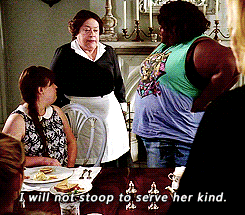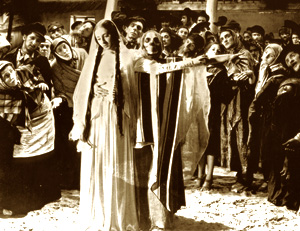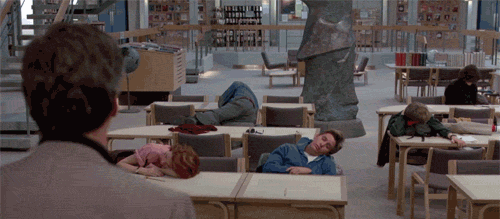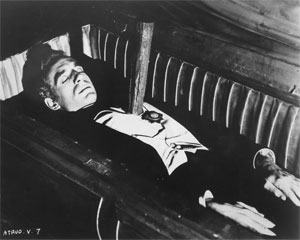If you were to ever hear a loud shrilling scream in the middle of the night, followed by heaving breathing and desperate cries for help, you’ll certainly know that I have just crossed paths with a centipede. With sometimes over a hundred skinny legs attached to individual segments of their long brown bodies, these monstrous creatures never fail to make me cringe in utmost fear. They roam around dark, damp places and carry around deadly venom in their system as they search far and wide for prey to inject it into. Although this venom isn’t toxic enough to be life endangering to humans, the fact that these centipedes practically move at the speed of light and will disappear from my sights in a matter of seconds definitely doesn’t help to ease my mind at all.
Carroll points out that some artists use the technique of magnification as they significantly increase the size of creatures we already deem as horrifyingly disgusting in order to evoke a more intense feeling of revolution and fear among viewers. For me, a certain Dutch horror film called “The Human Centipede” immediately comes to mind. For those who have never heard of the movie, it is about a doctor named Heiter who specializes in separating Siamese twins but is eager to perform a new experiment where he surgically connects three humans to create a creature that shares a single digestive system. He trains his human centipedes to perform tasks and physically harms them if they disobey his orders. Eventually, in an attempt to escape from the ward, the victims attack Heiter by stabbing his left leg with a scalpel.
In a side by side comparison between the typical house centipede and this malicious human centipede, the house centipede truly appears to be harmless. My irrational fear is purely psychological and I’m aware that all sharp toothed, hairy, and hundred-legged critters have no intention of killing humans. In thinking under this light – Can this scenario apply to other monsters as well? Are some monsters more scared of us than we are of them? Have they just been exerting means of self defense because they see us humans as a threat? Have we just been oblivious to their true intentions all this time?







 Religion in its essence is a medium by which individuals seek comfort and security. Its principles are supposed to serve as a framework in which ethical foundations are set. The benign aspects of religion can be numerous, however, religion is free from defects. Religion can easily diverge into its dark side which consists of cults, extremist, demonic possessions, and witchcraft. Folktales in particular, play an eminent role in disclosing the dark sides especially those that deal with demonic possessions A Jewish folktale for example, whose roots are trace back to the old testament of the Bible, revolves around a spirit known as Dybbuk. This spirit is known to linger in the world of the living because it is unable to rest in peace due to the sins it committed in the past. The lamenting soul would then cling itself into the body of an individual. By doing so, it completely takes possession over the body and its actions, with the only purpose of torturing the being it took over. It must be taken into consideration that this spirit, according to the folktale, is only able to take over a body of a sinner or someone who is not spiritual. The immense popularity over the concept of Dybbuk has enabled it to be adapted to the big screen by movies such as, The Possession, The Tenth Man, and The Unborn.
Religion in its essence is a medium by which individuals seek comfort and security. Its principles are supposed to serve as a framework in which ethical foundations are set. The benign aspects of religion can be numerous, however, religion is free from defects. Religion can easily diverge into its dark side which consists of cults, extremist, demonic possessions, and witchcraft. Folktales in particular, play an eminent role in disclosing the dark sides especially those that deal with demonic possessions A Jewish folktale for example, whose roots are trace back to the old testament of the Bible, revolves around a spirit known as Dybbuk. This spirit is known to linger in the world of the living because it is unable to rest in peace due to the sins it committed in the past. The lamenting soul would then cling itself into the body of an individual. By doing so, it completely takes possession over the body and its actions, with the only purpose of torturing the being it took over. It must be taken into consideration that this spirit, according to the folktale, is only able to take over a body of a sinner or someone who is not spiritual. The immense popularity over the concept of Dybbuk has enabled it to be adapted to the big screen by movies such as, The Possession, The Tenth Man, and The Unborn.









